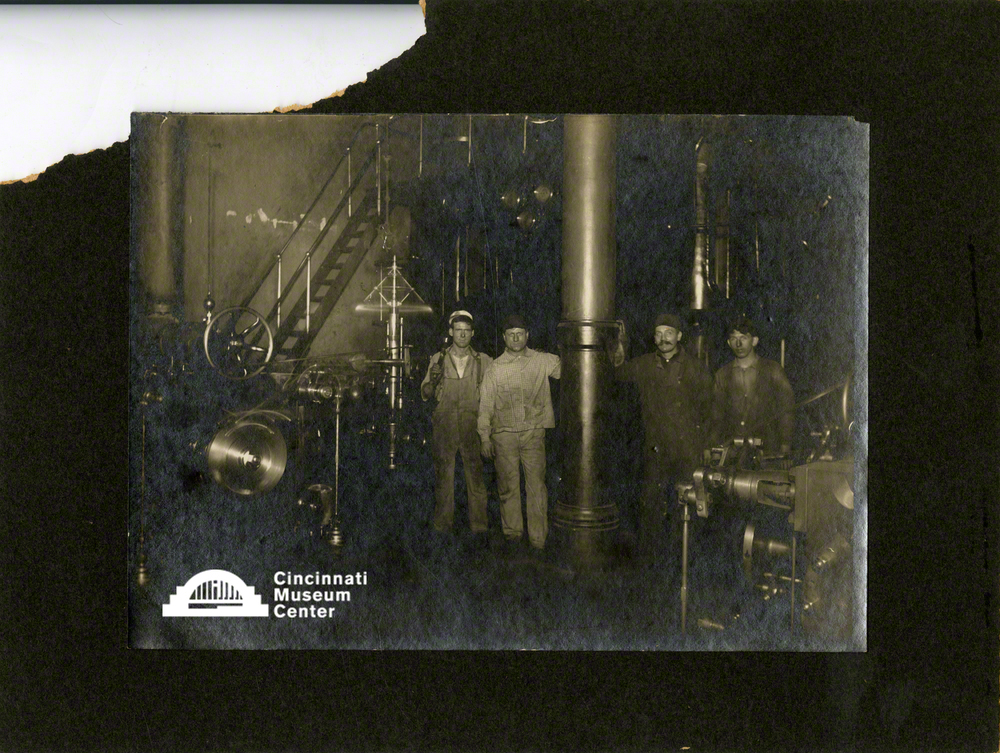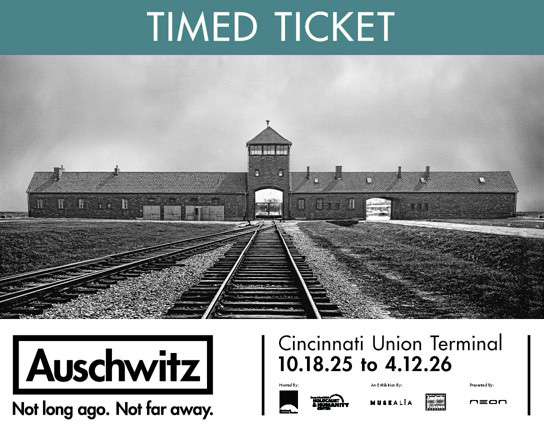
Photographs & Film
The collection consists of approximately 800,000 unique items. The earliest photographs are the 485 unique, cased daguerreotypes, ambrotypes and tintypes dating back to the 1840s. These are followed by thousands of albumen cartes-de-visite and cabinet cards of various sizes, stereographs, about 50 cyanotypes and a few salt paper prints. The remaining 75% of the paper prints comprise more modern processes. Less than 1% of the prints are in color. There are over 8,000 trade and real-photo postcards.
The bulk of the photographs in the collection date from the late nineteenth and early twentieth centuries and document the people, places and events of Greater Cincinnati. The collection includes good documentation of major events, transportation, buildings, parks, street scenes, businesses, industry, restaurants, the arts, sports and other leisure activities.
Major special collections include the J.P. Ball Collection (the largest known collection of photographs (over 400) by African American photographer J. P. Ball and his partners), the Paul Briol Collection (over 6,000 8x10 negatives by Paul Briol showing the beauty of Cincinnati’s rivers and hills, as well as photo assignments documenting a wide range of Cincinnati institutions from the 1940s and 50s), the Danny Ransohoff Collection (Danny Ransohoff’s 30,000 prints and negatives recording social conditions in Cincinnati and their dedicated relief agencies from the 1930s to 1980s) and the West End Architectural Collection (over 3,500 architectural details of West End buildings plus 2,000 other photographs by George Rosenthal).
History of the Collection
The first recorded accession of photographs was in 1870. Subsequently, small numbers of photographs were added each year. These, as well as magazine and newspaper clippings and prints and lithographs became the “picture collection.” Groups of photographs were divided into general subject classifications. In 1936, there were 10,000 photos in the collection. A quote from the annual report of that year said, “To catalogue this collection is a task for the future.” In the 1950s CHS Librarian Alice Hook, a member of the Picture Division of the Special Libraries Association, took an active interest in the Photograph and Print Collection and refined the arrangement of the photograph collection. Until the 1970s, library patrons could check out items from the collection for classrooms, businesses or the media. In 1981 the first Curator of Photographs was hired.
Active digitization of original photographs and their installation online via the Cincinnati History Library and Archives electronic catalogue is an on-going project. Currently, over 3,000 photos are available online and include images from the Ball and Thomas, Rombach and Groene, Lodder-Watson and the Kenyon-Barr collections.
Moving images and sound recordings
Moving images and sound recordings are unique primary historical resources that document a broad spectrum of subjects including aspects of our political, social, cultural and artistic life. Collections of moving images and sound recordings are increasingly valuable to a wide range of researchers, including the scholarly community, students, casual researchers, news media, film and television production companies and business and industry. These collections also preserve the local visual heritage, in particular, television news, educational and entertainment programming, as well as home movies and corporate productions. These resources have great educational potential.
The collection of moving images consists of approximately 6 million feet of film in various formats and approximately 3,000 videotapes. The bulk of the collection is news footage shot between 1959 and 1980 from local television stations including WLW-TV, WKRC-TV, WCPO-TV, WXIX and the local educational station CET. There are also locally produced television documentaries, entertainment programming, public affairs programming, training and industrial footage, and locally produced television commercials. In addition to the television programming, the collection also features local newsreels, home movies and amateur footage and a few commercially produced feature films and cartoons.
The sound recording collection consists of about 4,000 recordings. The bulk of the collection is primarily radio programming from the 1930s to the 1980s, including music, entertainment and news from WLW, WSAI, WGUC, WCKY, WVXU and WKRC. There are also recordings relating to local politics, as well as World War II programs and oral interviews.
Additional Links
Visit the Google Art Project to see our J.P. Ball online exhibit and some examples from our Fine Art Collection


